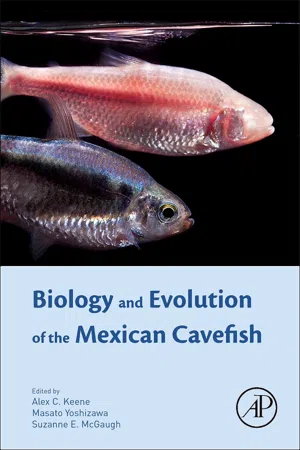
Biology and Evolution of the Mexican Cavefish
- 412 pages
- English
- ePUB (mobile friendly)
- Available on iOS & Android
Biology and Evolution of the Mexican Cavefish
About This Book
Biology and Evolution of the Mexican Cavefish features contributions by leading researchers in a comprehensive, unique work that examines a number of distinct areas of biology—evolution, development, ecology, and behavior—using the Mexican cavefish as a powerful model system to further understanding of basic biological processes such as eye degeneration, hearing, craniofacial development, sleep, and metabolic function.
These fish are currently being used to better understand a number of issues related to human health, including age-related blindness, sleep, obesity, mood-related disorders, and aging. The recent sequencing of the cavefish genome broadens the interest of this system to groups working with diverse biological systems, and has helped researchers identify genes that regulate sleep, eye degeneration, and metabolic function.
Mexican cavefish are particularly powerful for the study of biological processes because these fish evolved independently in twenty-nine caves in the Sierra de el Abra Region of Northeast Mexico. These fish have dramatic adaptations to the cave environment, and this can be used to identify genes involved in disease-related traits.
This scholarly text will be of interest to researchers and students throughout diverse areas of biology and ecology. It includes photographs of animals and behavior in laboratory and natural settings that will also increase interest and accessibility to non-experts.
- Includes a mixture of images and illustrations such as the geographical distribution of cave pools and the developmental biology of the nervous system
- Features a companion site with geographical maps
- Fills a notable gap in the literature on a topic of broad interest to the scientific community
- Presents the recent sequencing of the cavefish genome as a groundbreaking development for researchers working with diverse biological systems
Frequently asked questions
Information
Cave Exploration and Mapping in the Sierra de El Abra Region
Abstract
Acknowledgments
Introduction
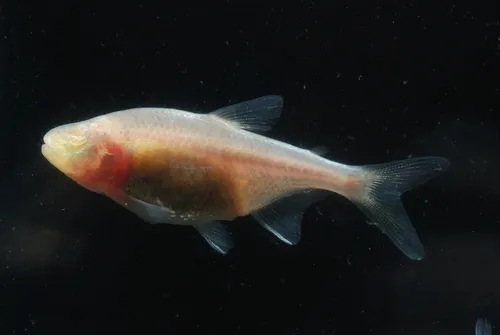
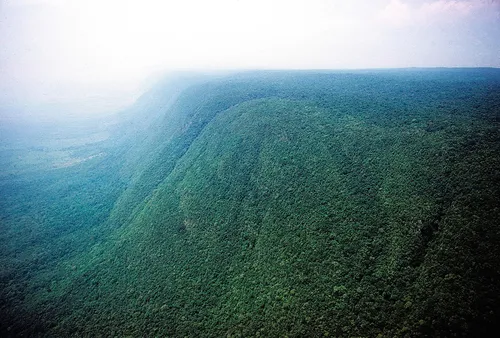
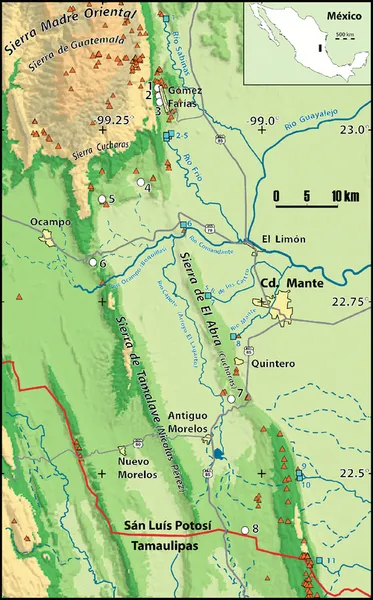
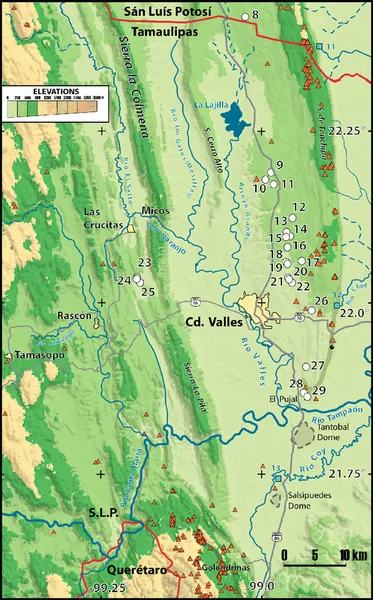
| Label | Cave | Length | Elevation | Depth | Bottom |
| 1 | Sótano (Resumidero) de Jineo | 302 | 292 | 144 | 148 |
| 2 | Sótano del Molino | 658 | 269 | 138 | 131 |
| 3 | Sótano Escondido | 100 | 303 | 150 | 153 |
| 4 | Bee Cave | 245 | 249 | 119 | 130 |
| 5 | Sótano del Caballo Moro | 285 | 320 | 211 | 110 |
| 6 | Sótano de Vásquez | 1500 | 422 | 277 | 145 |
| 7 | Cueva de El Pachón | 1000 | 211 | 8 | 203 |
| 8 | Sótano de Venadito | 4419 | 312 | 206 | 106 |
| 9 | Sótano de Yerbaniz | 2027 | 242 | 97 | 145 |
Table of contents
- Cover image
- Title page
- Table of Contents
- Copyright
- Preface
- Introduction: The Emergence of the Mexican Cavefish as an Important Model System for Understanding Phenotypic Evolution
- Part I: Ecology and Evolution
- Part II: Genetic Diversity and Quantitative Genetics
- Part III: Morphology and Development
- Part IV: Behavior
- Part V: Future Applications
- Concluding Remarks: The Astyanax Community
- Index
- Sync with Jellybooks